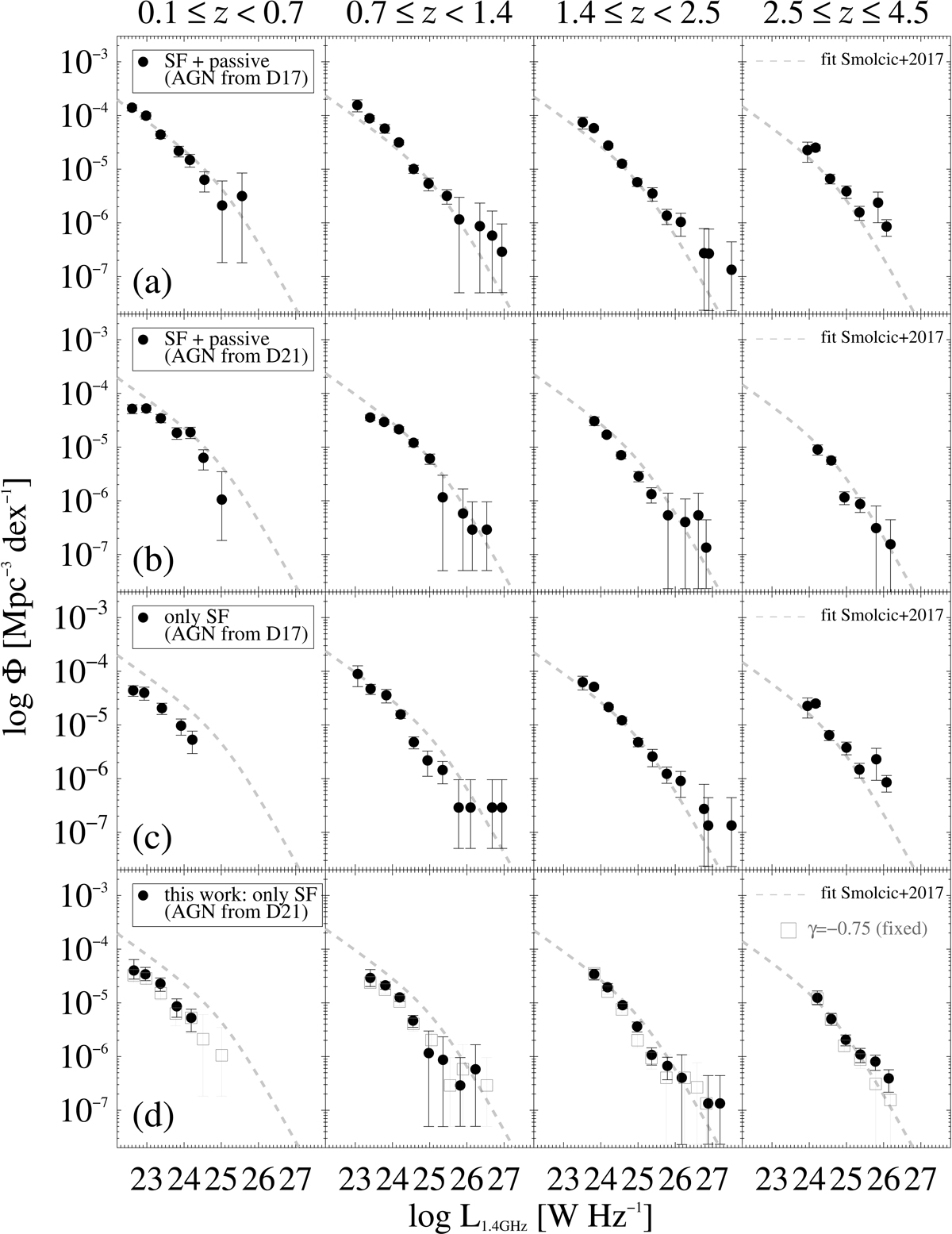Fig. C.1.

Download original image
Observed radio-excess 1.4 GHz luminosity function divided into four redshift bins (increasing from left to right). Data points (black circles) are binned with Δ(log L1.4) = 0.4 dex. Correction for flux completeness is equally applied to all realisations, following previous VLA-COSMOS-based studies (e.g. Smolčić et al. 2017c; Novak et al. 2018; Ceraj et al. 2018). The best-fit PLE model from Smolčić et al. (2017c) is overlaid on each panel. This figure is split into four rows, as follows. (a): Dataset from Smolčić et al. (2017c, including SF and passive galaxies) obtained by applying the radio-excess criterion from Delvecchio et al. (2017). (b): Dataset from Smolčić et al. (2017c) but identifying radio-excess AGN according to D21. (c): Radio-excess AGN from this work (i.e. only within NUVrJ-based SFGs) identified based on Delvecchio et al. (2017). (d): This work following D21 (same as the pre-corrected RLF shown in Fig. B.1, top panel). The equivalent RLF by assuming a fixed spectral index (γ=–0.75) is shown for comparison (empty squares). See the text for details.
Current usage metrics show cumulative count of Article Views (full-text article views including HTML views, PDF and ePub downloads, according to the available data) and Abstracts Views on Vision4Press platform.
Data correspond to usage on the plateform after 2015. The current usage metrics is available 48-96 hours after online publication and is updated daily on week days.
Initial download of the metrics may take a while.


